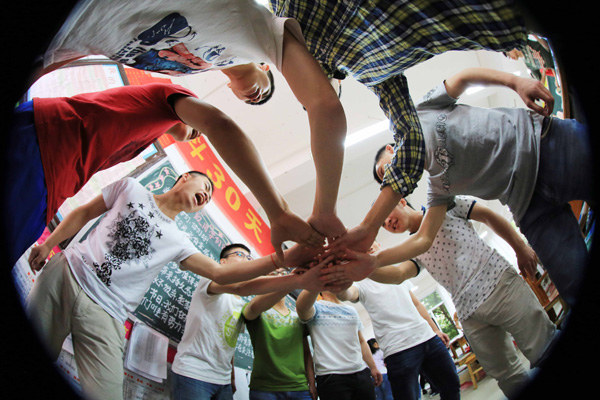 |
|
Comprehensive reform for gaokao will begin in 2017. The reform should ideally be carried out by 2020. Tan Kaixing / for China Daily |
"Any reform would fail under such pressure. The core conflict in gaokao is not the examination itself, but the pressure added by the whole of society," he said, adding that the gross admission rate of Chinese universities is 40 percent, but the education authorities do not provide acceptable alternative plans for the remainder.
"That's why all students still rush to gaokao."
Gong Ke, president of Tianjin's Nankai University, which is rated as one of the top 10 universities in China, said the challenge of the gaokao system is the shortage of good higher education resources.
"It is an unbalanced demand and supply relationship in education resources ... there are only about 30 'good' universities in people's view, and about 10 million examinees, but these schools only admit 150,000 students, about 1.5 percent of the total," he said.
The key is to increase investment in education, he said.
"In Tianjin, if a student is not able to go to Nankai, people will be fine with other options," he said.
Calls for gaokao reform were made more than a decade ago.
Slight reform of examination content began in 2003, when a number of provinces and cities, including Jiangsu, Beijing and Tianjin, were allowed to take individual examinations rather than standardized tests.
Last year, 15 provinces and regions adopted the national unified examination papers and 16 took individual tests.
Subjects varied in different provinces and regions. Generally, science students did not need to take humanity subjects, while art students did not need to take science subjects such as physics and chemistry.
The new reform did away with the labeling of "science or art" students, requiring all students to take three subjects in standardized tests: Chinese, mathematics and a second language, mostly English, with two opportunities to take the foreign test.
